When I joined the Franklin Pierce Early Learning Center a year ago, I was immediately struck by the positive and hopeful atmosphere. I would quickly learn that the school is a Kids at Hope school - believing and practicing that "All Children are Capable of Success, No Exceptions!"
Adults at a Kids at Hope school are Treasure Hunters - seeking out the strengths of both the children and adults in the building, as well as within themselves. I soon was connected with Wally Endicott as I prepared to co-present the annual Kids at Hope Parent Night we had this past November. I have since learned that Kids at Hope is being practiced internationally and the community is growing every day. Arizona State University has established The Center for the Advanced Study and Practice of Hope in partnership with Kids at Hope (more info here https://thesanfordschool.asu.e...e-of-hope/who-we-are).
Kids at Hope features a set of ACES that are a stark contrast to the Adverse Childhood Experiences ACEs that we have become so familiar with. As our Early Learning Center began to do research and prepare to present to families about Adverse Childhood Experiences and Resilience, the piece about Hope is what we had been missing. Bringing the Kids at Hope culture that families were already familiar with was the perfect way to further the strengths-based perspective in the conversation. The following screenshot from the Kids at Hope ACES tracking system outlines this alternative concept:

Wally Endicott is the Executive Director & Treasure Hunter of the Kids at Hope NW Resource & Training Center. He shared the below details with me to be featured on our ACEs Connection page:
For the past 25 years, Kids at Hope has been reviewing the scientific literature, conducting its own research, and testing its conclusions in order to better understand why many children, regardless of the risk factors, continue to beat the odds. Our findings have truly revolutionized whole child development and its relationship to academic and social emotional learning. Each day, we come closer to realizing that every child can succeed without exception.
One of the valued and powerful expressions Kids at Hope uses when we conduct our institutes, seminars, classes, etc. is in demonstrating that we are more effective together than we are alone (collective efficacy), but we need to work from a common understanding or code that is never challenged. That cultural code is: “We don't give up on kids, nor do we tolerate anyone who does.” It is consistent with our shared belief: “We believe that all children are capable of success, No Exceptions!” In today's systems we do tolerate adults who give up on kids because too many adults believe it's not their place to challenge their colleagues. In a KAH culture we do not just state that we believe in all kids we assess this belief in a collective manner and on a regular basis. The expectation then is that each and every one of us will overcome whatever is getting in the way of truly believing. This then changes the paradigm to one that allows staff to have the necessary conversations to cause the transformation.
We all know that children/youth succeed when they have meaningful and sustainable relationships with caring adults. This is indisputable. In our cultural framework we simply take the step to one of being intentional about creating (and measuring if you choose) these meaningful relationships. Meaningful relationships are not something we can “mandate” to our educators, this must be part of a natural occurrence within a culture that is adopted, believed and practiced by any particular organization. We can no longer continue the practice of allowing programs to replace meaningful relationships.
For the past nine years Kids at Hope has focused on the process of mental time travel and how it relates to HOPE. We define HOPE as the ability to visit your future*, return to the present, and prepare for the journey. Mental time travel then, is a learned skill that helps connect what is learned in school to what is required in becoming hopeful about the future.
So how does the brain mentally time travel? This occurs in the hippocampus. To be able to see the future, a truly unique human ability, the brain must retrieve information from the past. This is called episodic memory - the ability to recall past events and create future scenarios. This is the personal story of who we are, where we’ve come from and where we’re going. In contrast, semantic memory is the ability to recall facts and figures. The same neuro network is in play when mentally time traveling to the past and the future. Kids at Hope believes that this is where HOPE is born. Unfortunately, retrieving and integrating information in order to become hopeful has not yet been achieved as a common practice. There are very few (if any) real strategies for this.
In a bureaucratic hierarchy our strategy is to divide and conquer the work in front of us by creating job descriptions and organizational systems. The unintended consequence of that design is the system sometimes becomes more important than the intended beneficiary for who the system was designed (in our case, the students). Enlightened leadership understands the difference between bureaucratic and cultural success and ultimately uses both their management and leadership skills to generate greater success for all. We know how bureaucracies operate, it's the cultural piece that either we ignore or which eludes us. It is time for all of us to understand how cultures are created and maintained. We can no longer ignore the consequences when the ability to lead a positive culture escapes us.
*The future is – Home & Family; Hobbies & Recreation; Community & Service, Career & Education
More information about Kids at Hope can be found here: http://kidsathope.org/
Wally can be reached at wally@kidsathope.org / 253-229-7310.


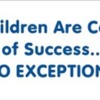
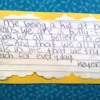
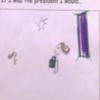
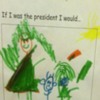

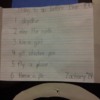
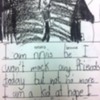
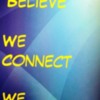

Comments (0)